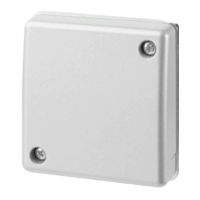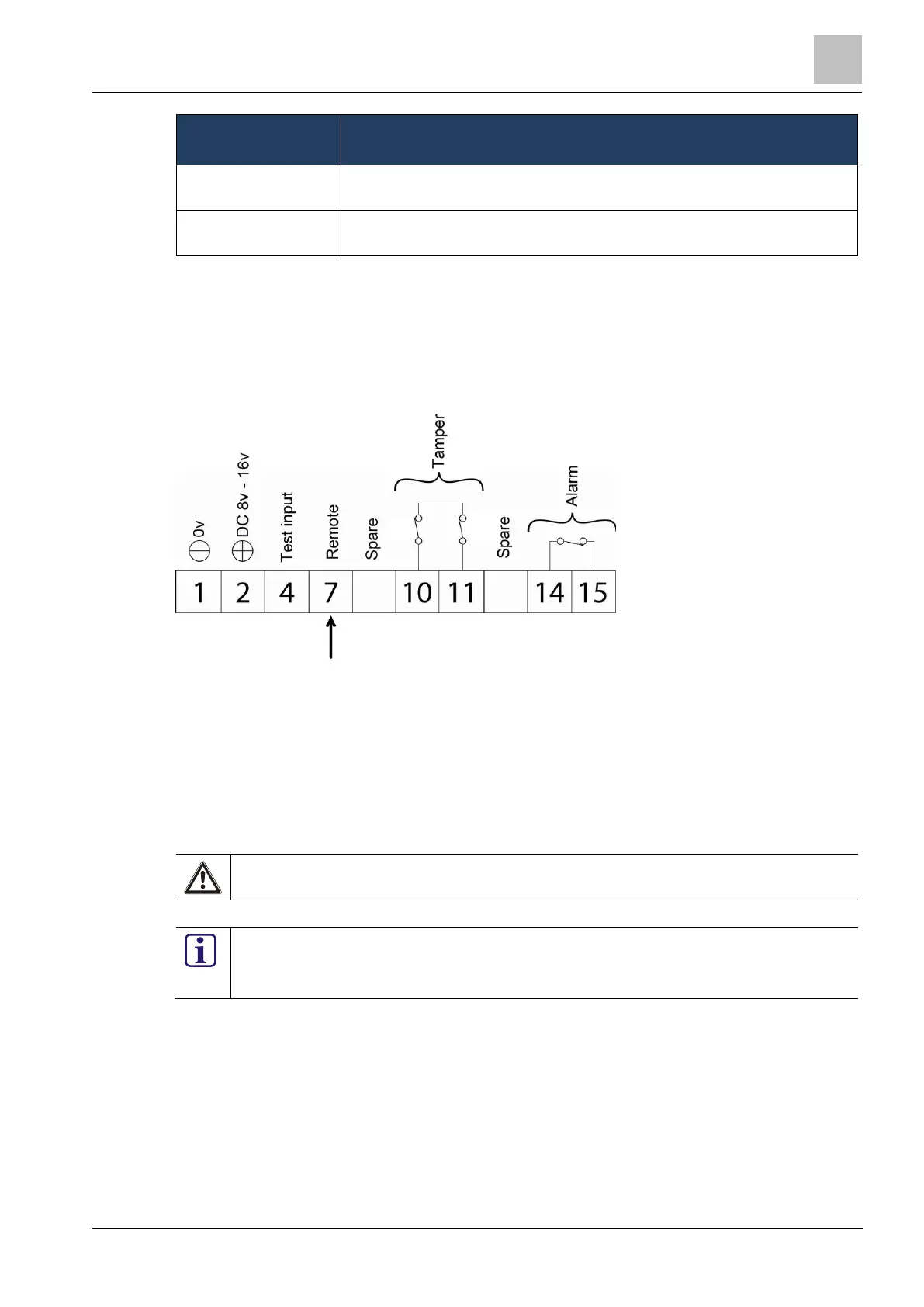Cable protection, flexible or fixed conduit to provide mechanical protection
to the cables serving the units.
Table 6-5: Night deposit box and ATM design considerations
6.7.3.1 Detector sensitivity
Normal operation and servicing of night deposit boxes and ATMs can cause internal noise and vi-
bration which may activate the seismic detectors.
For the GM730, GM760 & GM775 detectors, the sensitivity of the detector can be reduced by ap-
plying a remote input to terminal 7 on the detector as shown in Figure 6-16: Sensitivity reduction -
remote input.
Figure 6-16: Sensitivity reduction - remote input
When this input is active, the sensitivity of the detector is reduced to 12.5% of the original setting.
This input is used to overcome noise for short periods of time to avoid unwanted activations.
Any reduction in sensitivity must comply with applicable regulations such as VdS in Germany.
This input reduces the sensitivity of the integration detection. The reduction in sensitivity does not
apply to the shock alarm part of the detection system.
The factory setting is Active low. Active high is selectable through the GMSW7 SensTool software.
Apply the required input to terminal 7, which is selectable as part of the detector programing op-
tions.
Active low = 0V applied to activate. Active high = 0V removed to activate.
When selecting the option, Active high, it is essential to connect a permanent 0 volt to
avoid unwanted alarms. To activate, remove the 0 volt.
The construction of ATM’s and night safes can involve layers of different materials, which could be
steel/concrete/steel. This adds additional protection from drill attacks but provides challenges to the
installation of the seismic detectors & ancillary devices to the enclosure.

